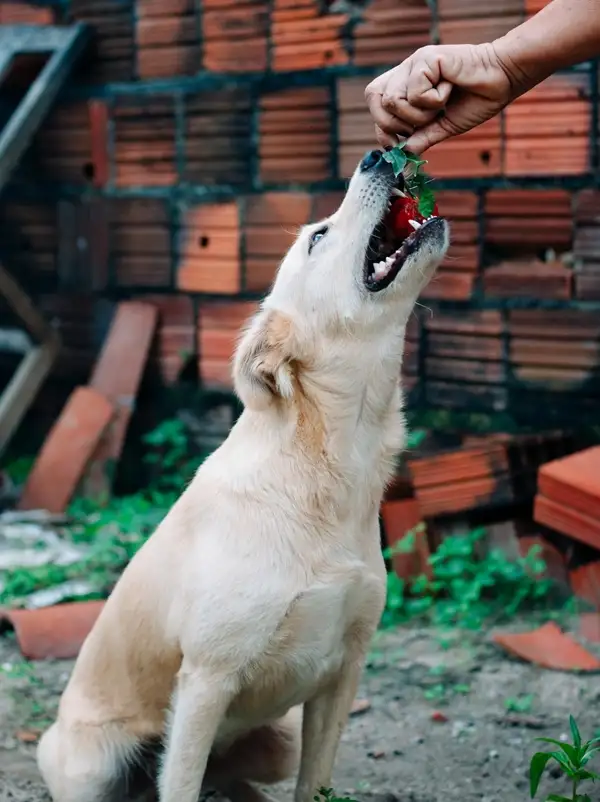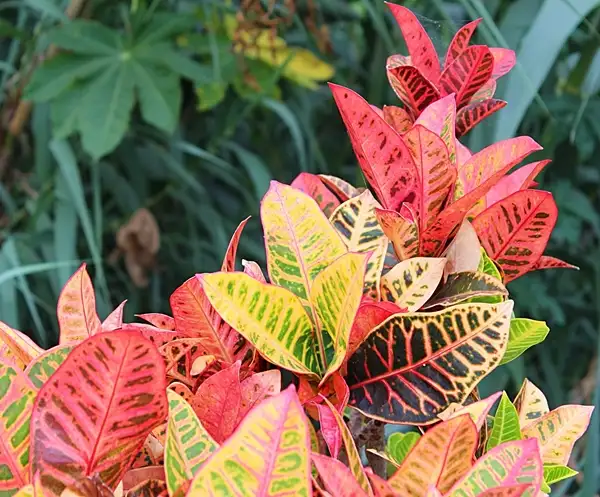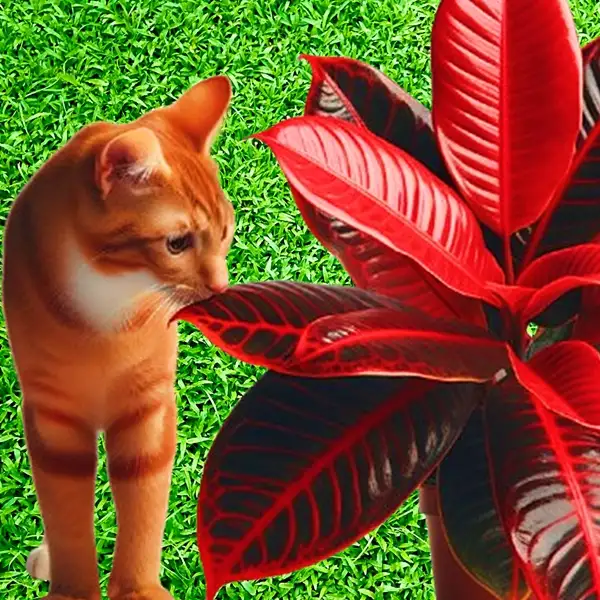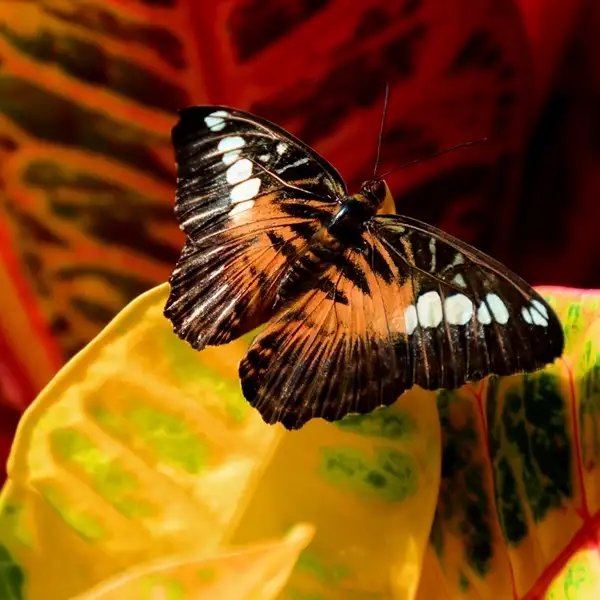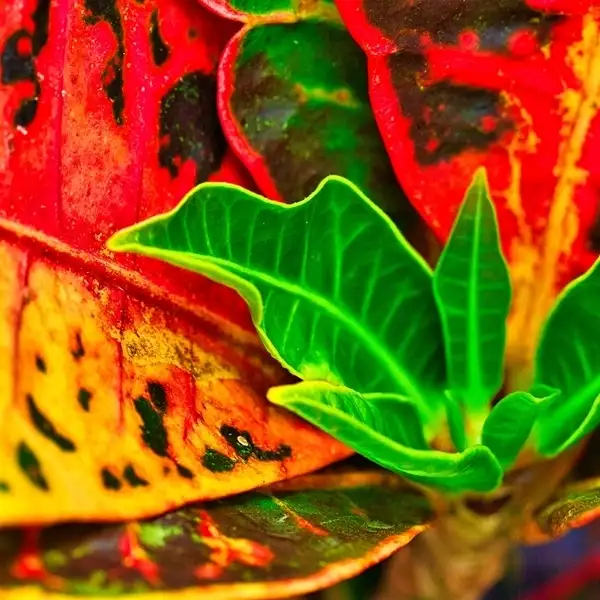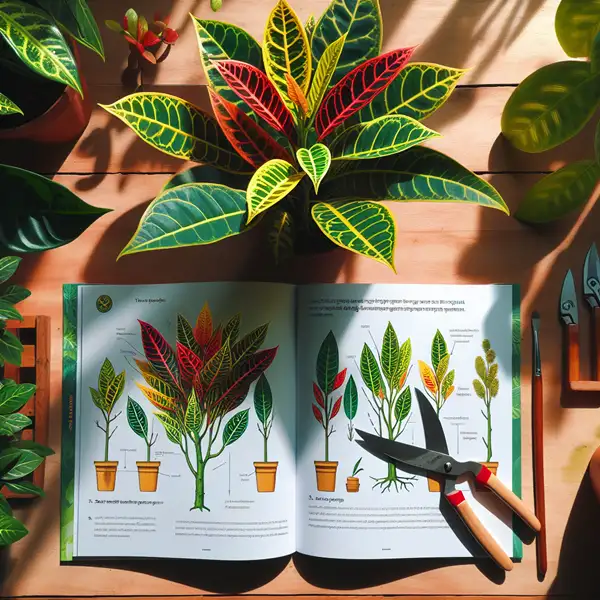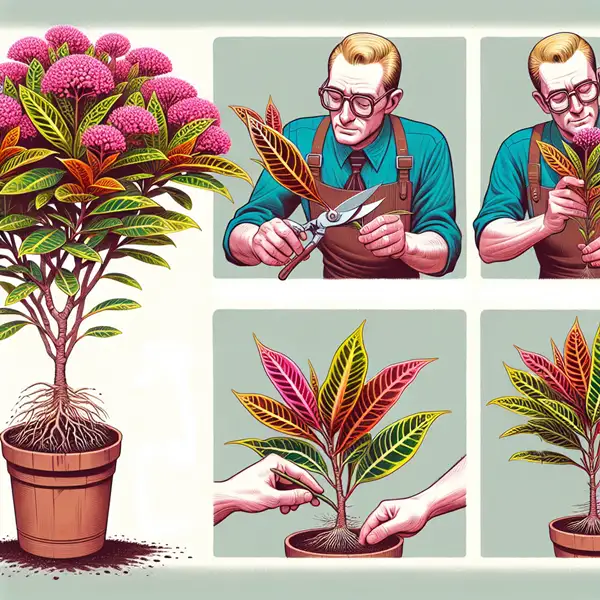Key Takeaways
| Key Takeaways | Why It Matters |
|---|---|
| Are Croton Plants Poisonous to Dogs? | Find out what makes these vibrant plants both appealing and potentially risky/toxic. |
| What hidden compounds make croton plants a concern? | Explore the unseen elements that could affect your pet’s health. |
| How does a dog react if it ingests croton leaves? | Recognize early warning signs and avoid unexpected situations. |
| What immediate actions should pet owners take? | Learn the crucial steps to protect your dog in case of accidental ingestion. |
| Is it possible to keep croton plants and pets together? | Discover how to balance home aesthetics with pet safety. |
Nature of Croton Plants
Croton plants scientifically known as Codiaeum Variegatum, are perennials well admired for their vibrantly colored leaves with distinct patterns & tremendous seasonal variation.
Native to India, Malaysia & some parts of Pacific islands, these tropical evergreens love warm weather but can also thrive indoors if suitable conditions are met.
Gardeners appreciate them greatly due to their diversity in appearance – from thin-leaved to broad-leafed types- and the multitude of color options ranging from reds, oranges, yellows to eye-catching purples.
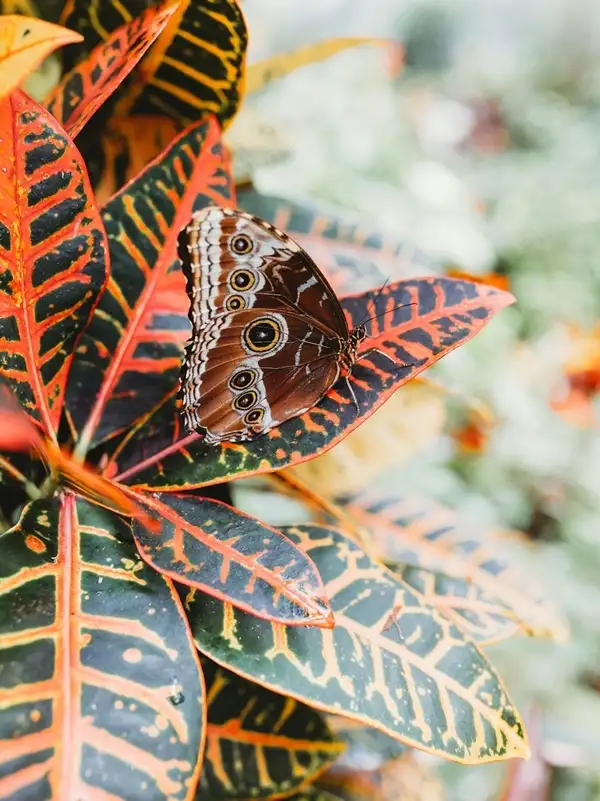
Furthermore, crotons add a dash of exotic appeal when used as decorative houseplants or garden fillers because they maintain their vibrant hues all year round. These drought-resistant species prefer high humidity and bright lights.
While they can endure short periods under low light conditions, they ultimately need more illumination for growth sustenance—reason why many people horizontally cultivate them near windows. However popular among plant enthusiasts worldwide, it’s important to delve into whether these delightful shrubs prelude any risks particularly concerning our four-legged friends.
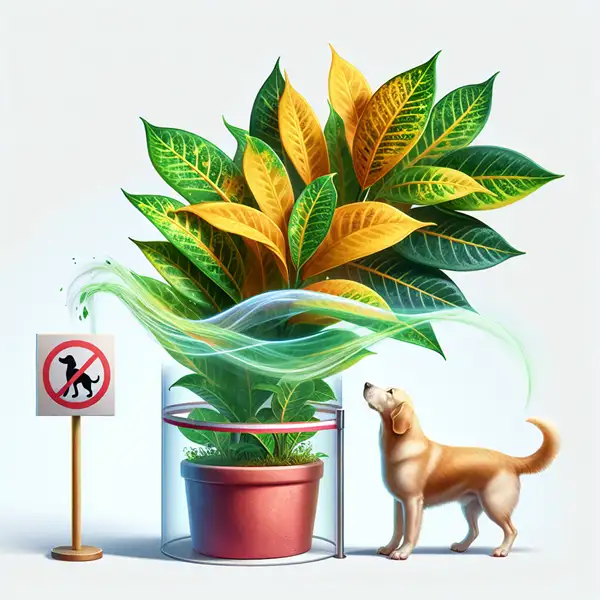
Toxicity of Croton Plants – Key Components
Parts such as leaves & stems contain irritant sap which may cause skin reactions on contact or ingestion-related distress upon consumption by pets like dogs & cats or even children alike—a factor implying caution when bringing crotons home despite their captivating beauty credits towards potential toxicity concerns.
So, are Croton plants poisonous to dogs? The answer lies in the toxic compounds they contain, which can cause serious health problems when ingested.
Research has identified that crotons hold certain biochemical elements crucial in understanding their toxic nature – namely phorbol esters present within the sap—substances notorious for stimulating an inflammatory response causing discomfort upon exposure. Phorbols mimic diacylglycerol activities—a compound involved in cell communication—which may trigger abnormalities leading to health complications inadvertently so it becomes essential recognizing potential risk factors.
How Dogs Interact with Croton Plants
Dogs being naturally curious creatures often exhibit their inquisitiveness by sniffing, pawing, or eating anything within their reach—which unfortunately might include houseplants too. Given their lack of discriminatory chewing instincts, they are unlikely to discern edible from harmful plants beforehand.
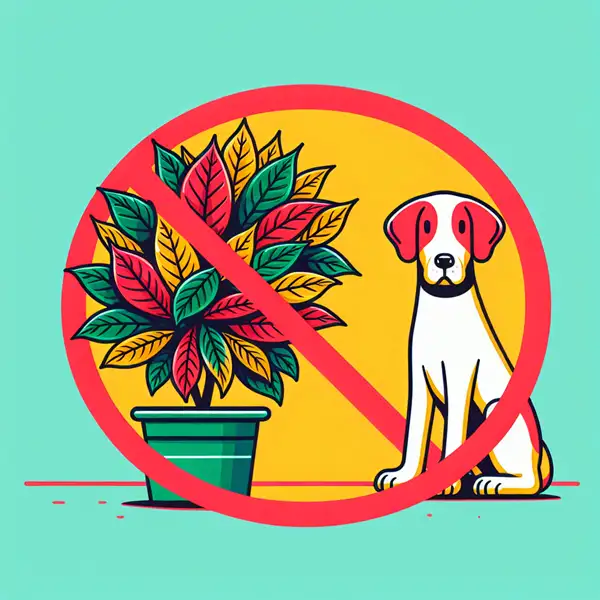
Dogs may be enticed by distinctive colors & unusual texture of croton leaves leading them to chew on them. When dogs interact with these plants, it is important to ask, ‘Are Croton plants toxic to dogs?’ because sap can be harmful if eaten.
Additionally, odd scent these plants give off, regarded as a ‘plant defense mechanism’ against herbivores, can often backfire, attracting domesticated pets instead due to altered diet preferences apart from natural predators.
Potential Hazards – Are Croton Plants Toxic to Dogs?

So, are Croton plants poisonous to dogs? Yes, and it’s vital to understand the risks involved when these plants are within reach of pets. Croton plants do pose a certain level of risk for dogs. American Society for Prevention of Cruelty Animals (ASPCA) lists Codiaeum Variegatum under its catalog of toxic plants for dogs marking it unfit for munching misadventures during playtime or out of idle curiosity.
Any sort of ingestion can lead your pooch to unexpected discomfort, manifesting in multiple symptoms of varying severity depending on how much they have consumed & individual physiological responses.
8 Symptoms of Poisoning in Dogs
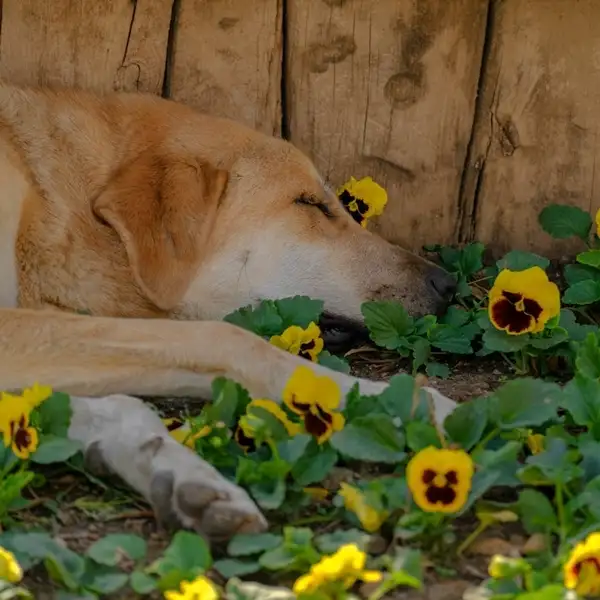
Signs identifying a dog’s potentially ingested part of a croton plant could include-
| Symptom | Description |
|---|---|
| Vomiting | Frequent expulsion of stomach contents 🤮 indicating gastrointestinal distress |
| Diarrhea | Loose or watery stools 💩 which can lead to dehydration if persistent |
| Excessive Drooling | Increased saliva production 💦 possibly due to oral irritation |
| Abdominal Pain | Signs include whining, restlessness, or a hunched posture 😖 showing discomfort |
| Lethargy | Unusual tiredness or lack of energy 😴 indicating systemic impact |
| Loss of Appetite | Reduced interest in food 🥄 which can lead to weakness over time |
| Skin Irritation | Redness, swelling, or itching 🌿➡️😢 especially if the sap contacts the skin |
| Seizures (in severe cases) | Uncontrolled muscle contractions ⚡ indicating severe toxicity |
Immediate veterinary assistance is crucial when poisoning is suspected to ensure health recovery and avoid unfortunate scenarios that could adversely affect the pet’s long-term well-being.
Prevention – How To Keep Your Dog Safe Around Croton Plants
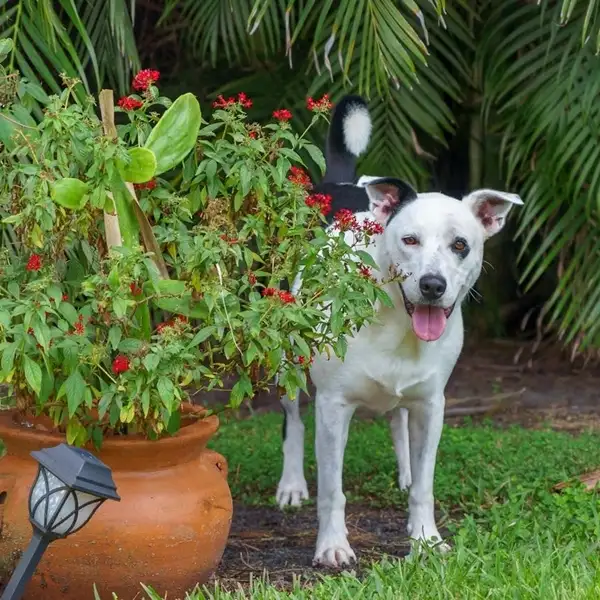
Protecting our four-legged companions from unnecessary troubles entails both careful choices of houseplants and vigilance in maintaining safe spaces their issue.
- Regarding Crotons, simplest solution would be to abstain from acquiring them altogether if pets are likely to nibble on flora.
- Alternatively, they could be placed in unreachable places curtailing their access to potentially hazardous plants.
- Educating family members, especially children, about the dangers associated with particular plant types is another preventative tactic.
- Regularly monitoring your dog’s behavior and encouraging safe toys can channel their curiosity away from harmful distractions.
- Finally yet importantly noting any sudden change in pet behavior or physical condition could suggest something is amiss. Timely consultation with a vet not only helps diagnose toxin-induced ailments but also chalk out a comprehensive dietary plan further boosting dog immunity by dealing with such potent stressors effectively.
Balance Beauty And Safety
While Croton plants undeniably add to our home’s aesthetic appeal, as responsible pet owners, we must consider potential health hazards these seemingly harmless decorations might pose for our beloved animals.
Awareness combined with vigilant indoor gardening choices, eventually ensures that both beauty of our surroundings & wellness of our canine friends are not compromised at each other’s expense—a feat attainable through conscious decision-making & actions alike.
Frequently Asked Questions
What do I do if my dog ate a plant?
Take your dog to vet immediately especially if it ate a Croton plant. Watch for symptoms like drooling, vomiting & diarrhea. Quick action prevents serious health issues.
How long does plant poisoning take in dogs?
Symptoms usually appear within hours. Look for signs like gastrointestinal distress, drooling or lethargy. Early veterinary care helps prevent complications.
What happens if a dog eats a croton plant?
Croton ingestion causes oral irritation, excessive drooling, vomiting & lethargy. In severe cases, the dog needs veterinary treatment.
How poisonous is croton?
Croton plants contain toxic phorbol esters which can cause significant digestive distress. Large amounts can worsen symptoms.
What is the most poisonous plant for dogs?
Oleander, sago palm & foxglove are among the most toxic plants for dogs affecting the heart, liver & kidneys.
What animal eats croton leaves?
Some insects, birds & grazing animals eat Croton leaves.
Should I worry about my dog eating plants?
Yes! Many plants are toxic & dogs may eat them out of curiosity. Keep harmful plants like Croton out of reach.
Is croton safe for cats and dogs?
No. Croton plants contain toxic sap that causes irritation and digestive issues. Keep them away from pets.


